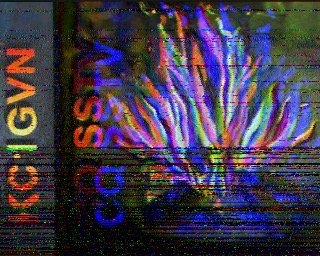Flat Earthers Radio with Charlotte Parallel
Flat Earthers: Unpleasant Truths/Comfortable Lies, curated by John Lake and Raewyn Martyn
The Engine Room Gallery, Massey University, Wellington, New Zealand http://flatearthers.space/
Charlotte and Rachel met during a Zoom studio visit in October 2020 to talk about their shared interest in radio and how sound travels through and around the Earth. Since that time, they have met regularly to share experiments as they learn about the hobby of amateur radio, including Rachel’s attempts to send paintings through the international airwaves using SSTV.
Slow scan television is a transmission method where images are converted and sent over voice frequencies on the radio. Reading across the image line by line, each pixel is assigned a different value for brightness and color, translating to a different frequency of sound. This investigation began by looking at satellite images sent down to Earth using this same encoding method- impossible in the Flat Earth model. Inspired by the Flat Earther’s scientific methods, Rachel wondered if she could get an image to move around the globe using sound, bouncing, and relaying around the curve from Muncie, IN to Wellington, NZ.
Some things we discovered along the way:
It is nearly impossible to communicate over this great distance using only analog methods and our current equipment. It depends on the sun, the salinity of the oceans between us, the optimal weather conditions all along the path. Just because you can hear one person speaking doesn’t mean the other can respond. Many people from the amateur radio club helped us, especially Drew Bennett, Gary Lee, and Robert Rai. Charlotte might receive anywhere from zero to infinity copies of the pizza Rachel sent her. Like throwing a message in a bottle into the ocean, there is no way to know if someone will find it, know how to read it, and pass it on.
For the Flat Earthers exhibition, Charlotte and Rachel will attempt to create a looped conversation between themselves and the atmosphere. It will be in part a demonstration of this research and a new collaboration between them and the ionosphere itself.









![SSTV-13Feb2021-125420[1].png](https://images.squarespace-cdn.com/content/v1/5913257886e6c06cfc83dd98/1643672164818-H8LM07QMLU3A4OTW8TQF/SSTV-13Feb2021-125420%5B1%5D.png)
